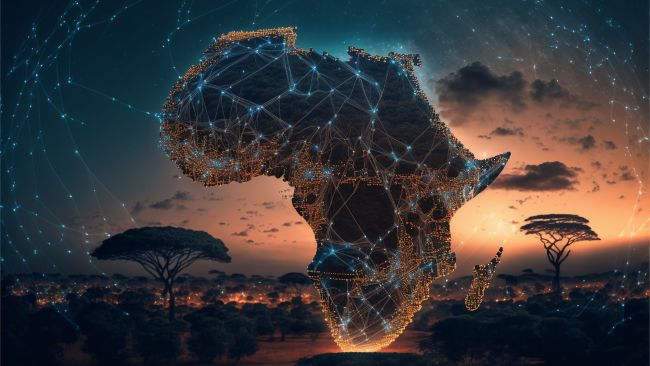Artificial Intelligence (AI) and African Languages
 Africa is a continent with a broad and rich linguistic heritage, home to over 2000 indigenous languages. This diversity presents challenges in education and communication. Artificial Intelligence (AI) and African Languages are now playing a role in overcoming these barriers, using technologies like Natural Language Processing (NLP) to help bridge the gap in language understanding, improving access to information, and increasing participation in global opportunities.
Africa is a continent with a broad and rich linguistic heritage, home to over 2000 indigenous languages. This diversity presents challenges in education and communication. Artificial Intelligence (AI) and African Languages are now playing a role in overcoming these barriers, using technologies like Natural Language Processing (NLP) to help bridge the gap in language understanding, improving access to information, and increasing participation in global opportunities.
As a result of colonization, the English language and other first-world languages have remained the most used languages of education in many countries of Africa. Most children in Africa learn in languages they do not understand. This has negatively affected their academic performance in no small way, including their available future opportunities. Many African speakers have abandoned their native languages in a bid to learn popular languages of communication used in global trade and politics. This has led to the death of many indigenous African languages and cultures as native languages are abandoned.
The good news is that artificial intelligence (AI) is already playing a part in addressing the challenges caused by Africa’s large linguistic diversity. Through AI-driven technologies known as Natural Language Processing (NLP); language difficulties can be addressed. NLP is an aspect of AI that helps with speech recognition, analysis, and translation, as well as question-answering and text summarization. The use of AI in communication can increase Africa’s access to information in their indigenous languages, thereby increasing academic performance in education and their participation in global events and partnerships.
The Role of AI in Preserving Africa’s Linguistic Heritage
The utilization of AI technologies in language recognition, processing, analysis, and translation, can boost both digital and economic value in Africa.
Researchers and contributors in Africa today are engaging in several AI-centered projects to promote cultural understanding and linguistic heritage across industries.
In education, AI is used to provide access to research materials for African scholars in their indigenous African languages. This promotes inclusion and amplifies the voices of African speakers in the digital ecosystem.
International brands are leveraging AI natural language processing tools to reproduce products and services that are both locally relevant and culturally sensitive to African communities. Undoubtedly, this will help Africa thrive as a viable global marketplace.
Through the contribution of AI in international relations, African diplomats can establish sustainable partnerships that will boost the continent’s global engagement and recognition.
5 AI Translation Tools for African Languages
-
Masakhane
Masakhane is a Pan-African natural language processing (NLP) network. Masakhane is an isiZulu word meaning “we build together.” It was formed for seamless research to understand the diversity of African languages and to address language barriers. This organization uses a community approach that involves over 1000 contributors from diverse fields. This revolutionary community boasts 35 active contributors who are creating machine translation tools on GitHub. The Masakhane team of language innovators has already made huge progress by publishing translation results for over 48 African languages. Over the years, Masakhane has successfully influenced and proven to be a helpful resource for African startups to reach people in their native languages.
-
HausaNLP
HausaNLP is a community of innovators dedicated to advancing Natural Language Processing (NLP) for the Hausa language. Hausa is widely spoken in Africa with an estimated 80 million speakers, but it is mostly absent from AI research and products. HausaNLP has its roots in Masakhane.
-
AfricArXiv
AfricArXiv is a Pan-African scientific preprint server that houses data for African language researchers. The preprint research papers are often in English or other European languages. However, the AfricArXiv project was started to help translate these papers into six diverse African languages: Amharic, Hausa, Luganda, isiZulu, Northern Sotho, and Yoruba.
-
Lelapa AI
Lelapa AI is a South African language AI tool that is fighting the language barriers in South Africa. With their VulaVula project, this AI language processing tool helps to foster communication across several South African multilingual environments, including Zulu, Sesotho, and Afrikaans.
-
UlizaLlama
UlizaLlama is in existence today in Kenya because a health tech company, Jacaranda Health, developed the AI tool to be culturally sensitive and locally relevant. UlizaLlama is designed to improve maternal healthcare by providing medical advice in Swahili to expectant mothers.
Challenges of Integrating AI into Local African Languages
It is an undeniable fact that artificial intelligence has the potential to improve the quality of human life. . In Africa, AI is actively bridging the gaps caused by language barriers.
However, there are constraints that have contributed to leaving Africa behind in the global digital information pool. These challenges include:
Data Scarcity
Numerous African languages are underrepresented and considered low-resource in the digital sphere. This means there is a limited amount of text digitally available to effectively train AI models. The lack of accessible African language data is a major barrier that hinders access to the global knowledge pool. When people don’t understand a foreign language spoken or written, Google Translate is the go-to translator. But for African languages, only 25 out of the 2000 languages spoken across borders are supported in Google Translate. AI is trained and works with the required data. So, with the scarcity of these and many other African language data online, Google Translate, and other AI language processing tools will definitely find it hard to identify, analyze, and interpret the datasets. In the absence of the necessary information, they automatically return inaccurate translations. This better explains the premise that the underrepresentation of African languages online is a huge challenge that makes it more difficult to use AI as a tool for African language translation.
Ethical Concerns
Ethical compliance surrounding data collection is a major concern. For the most part, oral traditions are the primary means of communication in Africa. When these languages are digitized for AI development, questions about consent and ownership will be raised alongside. These questions are raised because of exploitation and poor compensation approaches.
Limited Resources
An unpopular and often disregarded hurdle with AI integration into African languages is limited resources. There are both limitations of human and technical resources, both of which contribute to the slow adoption of AI into African languages.
For the technical aspect, an online repository where the data of African languages are kept is lacking. Today, most people are only able to access an African language through searches within Google Translate. For instance, Masakhane is a natural language processing (NLP) network that was founded for research purposes by Africans. However, it lacks the cutting-edge computational tools used in Silicon Valley. Masakhane has to make do with older models. Even Jade Abbott, founder of Masakhane pointed out that scarcity of data isn’t really an independent problem. She added that, “If there is not much data, then there’s no point having a big model that houses a large dataset because it doesn’t give any advantage.”
Furthermore, there is a limitation in the number of African innovators who are interested in preserving Africa’s linguistic heritage. This makes it difficult to achieve a more equitable digital ecosystem in Africa.
Addressing the Challenges: Keys to Expanding the Reach of AI Across African Multilingual Environments
Despite the progress being made with the addition of more African languages to the global knowledge pool, there is still much to be done. There is a great need for better strategies to be adopted to address these three intertwined, but significant challenges: data scarcity, ethical considerations, and limited resources.
Co-founder of Everse Technology Africa, Michael Michie, pointed out the need for clear conditions to guide the retrieval of language data and protect the privacy of indigenes of the African communities whose languages are being used to train AI models. He added as a warning that without proper consent and appropriate compensation approaches put in place, there will be abuse and a high risk of exploitation of data.
Additionally, networks of African researchers and communities should actively get involved in looking for ways to increase the data on the web in African languages. This may include the documentation of scientific terms in the African languages where no such terms currently exist. When this is done, the data can be interpreted by AI to improve access to four African languages. The field of AI language research needs more volunteers to be able to build AI and other language technology solutions aimed at preserving the indigenous languages of Africa.
Conclusion
While the number of African languages in the global knowledge pool is increasing, there is still a large number of African languages that are unrecognized online. This makes it difficult for AI to identify and translate the datasets of these underrepresented African languages.
Beyond the preservation of linguistic heritage, African language innovators must understand that their efforts to address the three core challenges of AI language technology integration pave the way toward inclusivity and equity in the digital landscape for all African languages.
References
